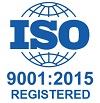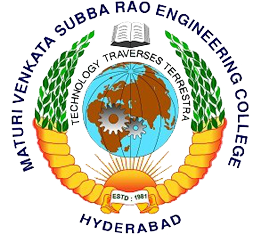WITH EFFECT FROM THE ACADEMIC YEAR 2013 - 2014
ME 467
TOTAL QUALITY MANAGEMENT
Instruction 4 Periods per week
Duration of University Examination 3 Hours
University Examination 75 Marks
Sessional 25 Marks
Unit-I
Strategic Quality Management: Quality policies, quality goals, obstacles to achieving successful strategic quality management.. Organization for quality role of {Top. middle, work force teem (Quality Circles). Developing, a quality work culture - Maslow need theory, Herzbeg 2 factor theory, theory X, Y & Z. Methods to create and maintaina awareness of quality, provide evidence of management leadership, types of self development and empowerment programmes, methods of participations means of inspiring action, recognition and rewards. Supplier quality rating plans (lot plot plan, OC curve, parento analysis) assignment of supplier capability, Methods of evaluating supplier products, contract management (Joint economic plan, join technological forecasting).
Unit-II
Design for quality: Basic functional requirements of quality, Design for (reliability, safety cost and product performance) concurrent engineering (DFMA) value engineering. Support for quality improvement processes (Block diagram, brain storming, cause effect analysis, pareto analysis) Quality function deployment, reliability analysis, failure rate, failure pattern of complex products (bath tub curve) weibull distribution relationship between part and the system exponential reliability, availability, FMEA (Fracture mode and Effect Analysis) Design for experiments: Factorial experiments, construction fractional designs.
Unit-III
Technical tools for quality: Comparison of two methods: observation of data, distribution, statistical analysis, chi square test, F test. T test. Hypothesis
testing significance testing, linear correlation and regression. Analysis of variance (ANOVA). 4 factor ANOVA experiment 2 levels. Analysis of means. Techniques for on line quality:: Data collection plan, variable an attribute charts, interpreting the control charts, charts for drifting processes, mufti variant charts, alternatives to statically process controls. Techniques for offline quality control: Background to Taguchi method (Quality loss and loss function, controllable factor and non controllable factors in parameter performance, tolerance design. Taguchi
Analysis Techniques: Net variation and contribution ratio, estimation of process performance. Accumulating analysis, performance measures-avoiding means variance dependents, choosing noise performance measure, minute analysis and life testing Taguchi tolerance design and tolerance (re) design.
Unit-IV
Quality Information System: Scope of quality information system. Different between QIS and MIS. Creating new software (steps, types, defects) reports on quality (operational and executive reports) Features of QIS software. Software for inspection.
Inspection System: Operational sorting and correction sorting. AQL, LTPD, AOQL. Non destructive test. Audit systems: (quality improvement planning and implementation, describing quality function, process control system. Control of measurement system, material identification and control, drawing and specification control, process corrective action) the concept of POKAYOKE.
Unit-V
Measure of customer needs: The need to measure customer satisfaction. Importance of proper packaging, customer processing and installation of product, dealing with customer complaints, using weibull analysis, field feed back, parameter to measure customer (Dis) satisfaction. Problems with the customer satisfaction system. Beyond TOM: Difficulties in implementing TOM system, rating your quality system. JIT system, the people side of TOM. system integration, Kansei engineering and flexibility in manufacturing.
Suggested Reading:
1. H. G. Menon. TOM in view Production Manufacturing, Me Graw Hill, Publishers.
2. N. G. Logothetis, Managing for total quality.
3. J.M. Juran& Frank Gryna, Quality planning and analysis.
4. Hanson and Ghare, Quality control and Application.



